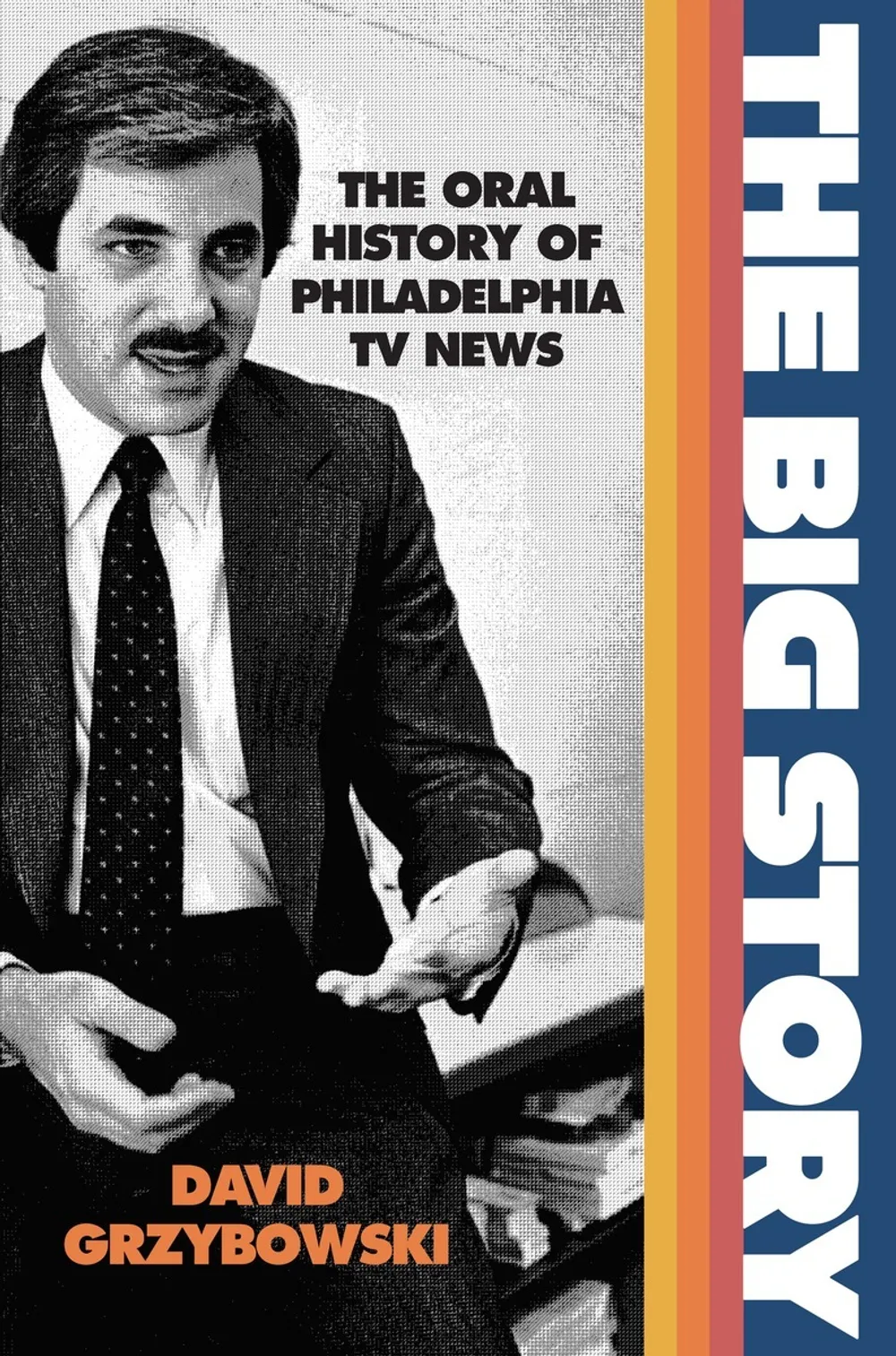Stay in the Loop
BSR publishes on a weekly schedule, with an email newsletter every Wednesday and Thursday morning. There’s no paywall, and subscribing is always free.
A new book takes you inside the TV coverage of Philly’s biggest stories
The Big Story: The Oral History of Philadelphia TV News, by David Grzybowski

In a lot of major US cities, including Philadelphia, local TV news plays a major role in the fabric of the city, with the anchors, in particular, attaining celebrity status rivaling just about any local figure, with the possible exception of pro athletes. But then again, not even Bryce Harper or Jason Kelce is as much of a Philadelphia institution as Jim Gardner.
Now, David Grzybowski, himself a former local TV reporter at WPHL, has written a hugely entertaining new book about it: The Big Story: The Oral History of Philadelphia TV News (published earlier in the fall by Temple University Press). This book, featuring more than 200 interviews—including big guns like Gardner and Larry Kane—is an absolute must for anyone who lived through the events covered and watched the local coverage of it on TV.
(One point of personal disclosure: I briefly worked for a local TV station on the web desk about a decade ago. A few interviewees in the book are people who were my colleagues or whom I’ve met on other occasions, but I was not present for any of the major events discussed in the book.)
The Pope, Philly sports, blizzards, disasters, and more
Beginning its narrative in the 1970s, the book devotes major chapters to the biggest stories that have taken place in the market over the last 50 or so years: two Papal visits, two sports championships, and weather emergencies, both ones that took place (the blizzard of 1996) and those that did not (NBC10’s 2001 prediction of a “storm of the century”). There are also the Philadelphia news angles on such disasters as the 9/11 attacks and the Covid-19 pandemic.
The best chapters of the book are higher-stakes calamities, such as the MOVE bombing of 1985, the live suicide death of State Treasurer R. Budd Dwyer in 1987, and the Amtrak train derailment in 2015. These occasioned serious moral dilemmas, leading to tough newsroom calls on what to show and not show. And while it’s often misremembered that Dwyer died on live television, that was not the case; the footage aired on 6ABC just over an hour later.
That storm of the century debacle, meanwhile, wasn’t a matter of life and death: just embarrassment. But the blow-by-blow of who was and wasn’t at fault is oddly fascinating, especially since it still carries bad feelings all these years later.
There are also heartfelt remembrances of beloved 6ABC figures Jim O’Brien and Gary Papa and how those channels dealt with their passings. A running theme throughout, especially laid out in a late chapter, is that Channel 6 is a close-knit family that few major on-air figures ever leave. It’s managed to consistently remain the number-one station in the market and one of the most respected TV stations in the country.
Wanting more
I have but a few minor quibbles. There’s not much on the topic of day-to-day coverage of crime, and how the different stations have handled it over time. The section on the rise of Comcast Sports Net tells a convincing story about how that sports channel became a local media colossus, but the chapter ends without examining the channel’s slow decline.
Each chapter is followed by a subsection (“And finally, tonight…”) which details smaller stories from throughout the years. But I would have liked to hear more about some of these, such as the incident in 1995 in which a weatherman was fired—from two different stations—for giving videotapes of newscasts to mobsters.
As for the Larry Mendte/Alycia Lane saga? That could have been its own chapter if not its own book.
And finally, there’s not enough about “Move Closer to Your World,” 6ABC’s longtime theme song, except for a couple mentions of when it was changed—and then changed back four days later—in 1996 (the song’s creation, in the early 1970s, predates the book’s narrative).
Nevertheless, The Big Story is an outstanding and very entertaining book. Between this and a recent documentary called Broadcast Wars, about the ratings battles among TV news stations in my home market of Minneapolis-St. Paul, this type of content is fantastic, and we could use more of it.
What, When, Where
The Big Story: The Oral History of Philadelphia TV News. By David Grzybowski. Philadelphia: Temple University Press, November 2024. 360 pages, available in hardback or ebook; $35. Get it here.
Sign up for our newsletter
All of the week's new articles, all in one place. Sign up for the free weekly BSR newsletters, and don't miss a conversation.

 Stephen Silver
Stephen Silver